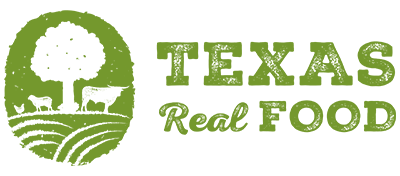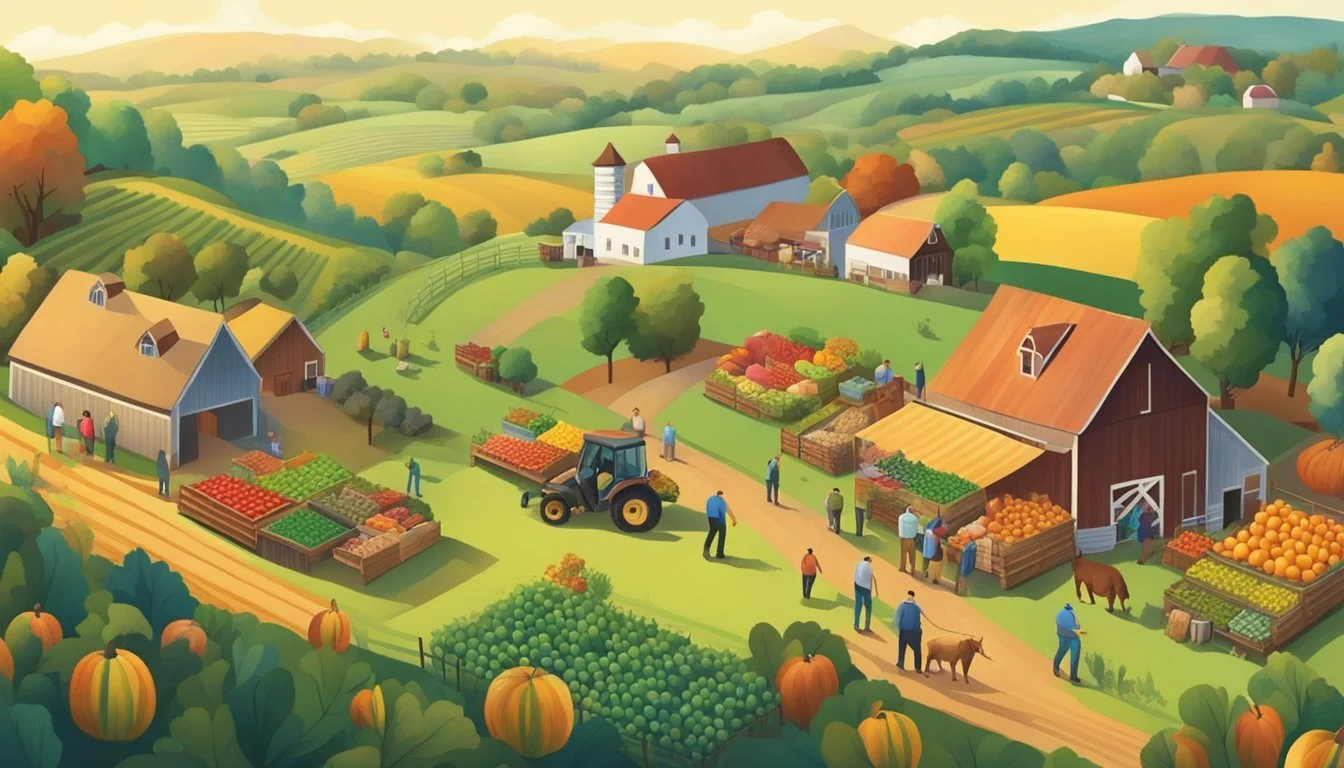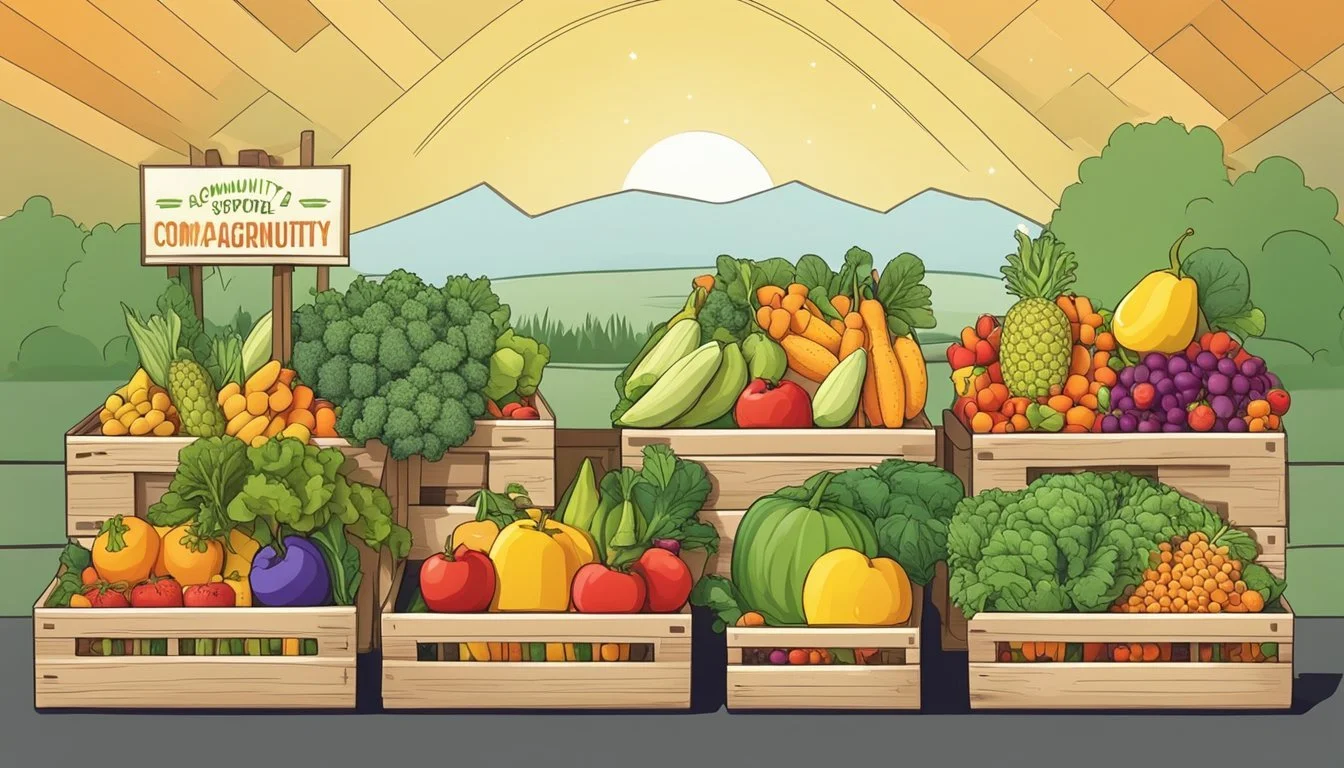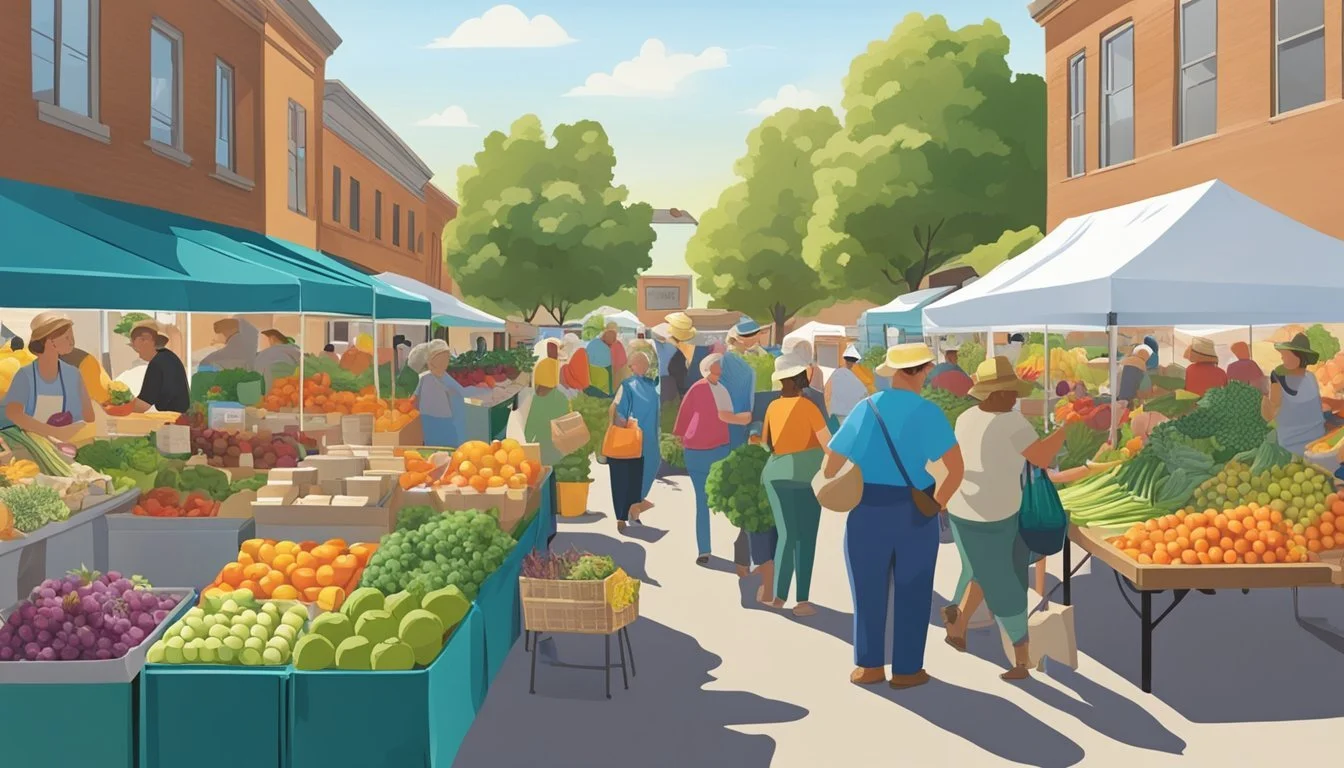Community Supported Agriculture (CSA) in Nampa, ID
A Guide to Local Farm Partnerships
In Nampa, Idaho, Community Supported Agriculture, commonly known as CSA, represents a growing movement towards fresh, locally-sourced food. By joining a CSA, residents commit to supporting local farmers and in return receive a share of the season's harvest. This symbiotic relationship fosters a connection between consumers and those who cultivate their food, effectively bridging the gap from farm to table.
CSA programs in Nampa offer a means to access a variety of farm-fresh foods while contributing to sustainable farming practices. Members typically receive a weekly or bi-weekly box of produce, which may also include other farm-produced goods depending on the CSA's scope. This model not only supports the local economy but also encourages community members to engage with their food source more intimately.
As these programs gain traction in Nampa, they align with broader state initiatives. Idaho Preferred, for example, is a program that promotes local agricultural products and has helped increase the visibility and adoption of CSAs within the state. Nampa's local farms embrace this trend, offering diverse CSA options ranging from vegetable boxes to mixed shares that might feature fruit, eggs, and even locally raised meat, reflecting a vibrant agricultural scene committed to quality and community.
Understanding CSA
Community Supported Agriculture (CSA) represents a partnership between local Idaho farmers and consumers that fosters eco-friendly practices and strengthens the community's access to fresh, seasonal produce.
Definition and Principles
CSA is a model where consumers purchase shares of a farm's harvest in advance. This concept relies on a shared commitment where both the farmer and consumer bear the risks and rewards of agriculture. Idaho Preferred, an initiative to promote local food, includes many CSA programs that adhere to these principles, ensuring consumers receive a variety of healthy, locally-grown products throughout the season.
History of CSA in Idaho
The CSA model is relatively new in the United States, with Idaho being a significant contributor to its growth. Idaho's CSA began as a grassroots effort to connect local farmers directly with their communities, providing an alternative route to the traditional farmers market. This approach has not only nurtified a deeper connection between Idahoans and their food sources but also strengthened the state’s commitment to sustainability.
Benefits for Consumers and Farmers
For consumers, CSAs offer the joy of experiencing fresh, farm-to-table produce, and often a chance to visit the farms. They can taste the seasonal diversity of Idaho's agriculture. Farmers benefit from a reliable source of income upfront, which can help with the fiscal stability needed for eco-friendly practices and planning. The model fosters a sense of trust and support within the community as members become active participants in the farming process.
Types of CSA Programs
In Idaho, the types of CSA programs vary, with some focusing solely on produce, while others integrate proteins, dairy, honey, and even fermented products like kombucha and ciders. These variations cater to the different needs and preferences of consumers, promoting a diverse local food economy. Consumers typically pick up their CSA share at a designated location, like Peaceful Belly Farm in Nampa, which serves as a local pick-up point and offers additional activities for the community such as wine and cider tastings.
Getting Started with CSA
Community Supported Agriculture (CSA) programs in Nampa, ID, offer residents a way to obtain fresh, locally grown produce while supporting area farmers. The process begins with selecting a CSA that aligns with your needs followed by a straightforward registration.
Choosing the Right CSA
When selecting a CSA, an individual should consider the variety of produce offered and the convenience of pick-up locations. For instance, Happy Heron Farm caters to those looking for a small, family-operated farm that practices regenerative agriculture. Another option, Spyglass Gardens llc, emphasizes chemical-free, organic methods and is dedicated to creating healthier soil ecosystems. Here are key factors to consider:
Produce Variety: Does the CSA provide the fruits, vegetables, or even additional options such as dairy, honey, and eggs that you plan to use regularly?
Farm Practices: Does the farm use sustainable practices that you support?
Location: Is the farm or pick-up location easily accessible to you?
Schedule: Does the distribution schedule align with your availability?
Community Involvement: Does the CSA, like Peaceful Belly, offer education on agricultural practices?
The Registration Process
Once a CSA has been chosen, the next step is to register for the program. Here is a brief outline of what to expect during the registration process:
Plan Selection: Determine the plan and share size that fits your needs. Some CSAs may offer half shares for smaller households or full shares for larger families.
Contact Information: Provide pertinent details such as your name, address, and email.
Payment: Arrange for payment, which may be required in full or in installments. Be aware of deadlines to avoid being late.
Pick-Up or Delivery Details: Choose a pick-up location from the farm's options (sometimes available at a farmers market) or arrange for delivery, if offered.
Local CSAs may also have their own specific sign-up protocols, so reading through the provided program guidelines thoroughly is advised. By doing so, members can ensure they understand the expectations and responsibilities involved in their chosen Community Supported Agriculture program.
CSA Offerings in Nampa, ID
Nampa, ID boasts a variety of CSA programs providing fresh, locally-sourced produce and products directly from farm to table. These initiatives strengthen the relationship between farmers and consumers, ensuring that residents have access to nutritious, seasonal offerings throughout the year.
Produce and Products Available
Community Supported Agriculture in Nampa includes a diverse array of produce, ranging from organic vegetables to heirloom fruits. Members can enjoy fresh produce like apples and an assortment of vegetables, as well as specialty items such as:
Freshly-laid eggs
Local honey
Handcrafted cheeses
Alfalfa hay
Nuts from local orchards
Sustainable pollination products
Additionally, some CSAs offer a delightful selection of flowers, adding color and vibrancy to the assortment of goods available in the region.
Understanding CSA Seasons
The growing season in Nampa dictates the CSA schedule, typically divided into:
Spring Share: Emphasizing early-season crops such as leafy greens, radishes, and peas.
Fall Share: Featuring late-season produce including squash, potatoes, and carrots.
Members of CSAs in Nampa are provided with fresh, seasonal crops reflective of the region's fertile landscape. This model of agriculture supports a cycle of sowing, growing, and harvesting that is entwined with Idaho's distinct seasons. It allows residents to eat with the rhythm of the land, savoring the peak flavor and nutrition of each harvest.
Local Farms and Their Specialties
Nampa, ID, has a wealth of farms dedicated to providing the community with fresh, locally-grown produce. Each farm brings something unique to the table, from the type of crops they grow to their approach to sustainability.
Spotlight on Nampa Farms
Happy Heron Farm and Peaceful Belly Farm stand out as local family farms located near Nampa. They have built a reputation on growing a variety of fresh vegetables while focusing on community involvement and sustainable farming practices.
Happy Heron Farm specializes in cultivating a range of heirloom tomatoes, peppers, and leafy greens such as lettuce.
Peaceful Belly Farm, known for its diversity, grows an array of crops including beets, tomatoes, and cucumbers.
Diverse Crops and Varieties
These farms offer a variety of veggies that cater to the preference and health needs of Nampa's community. They emphasize the cultivation of both well-known and unique varieties.
Happy Heron Farm is particularly noted for a wide selection of peppers, from sweet to spicy, and an assortment of tomato breeds that differ in color, size, and taste.
Peaceful Belly Farm's seasonal selection frequently includes root vegetables such as beets, alongside various kinds of salad greens and heirloom tomato types.
Certified Organic and Sustainability Practices
True Roots Organics is a certified organic farm that prioritizes a sustainable food system. It is committed to growing produce without the use of harmful pesticides or herbicides.
Happy Heron Farm and Peaceful Belly Farm implement farming techniques that enhance soil health and conserve water, reflecting the region's support for sustainable agriculture.
Through practices such as crop rotation, composting, and natural pest control, these farms ensure that they contribute to Nampa's eco-friendly food landscape.
Additional Services and Products
Community Supported Agriculture (CSA) in Nampa, ID, extends beyond the distribution of fresh produce. It fosters community engagement and offers a diverse range of products from local farms.
Community Events and Education
Local Farmers often host community events, aiming to strengthen their relationship with CSA members and the broader public. These gatherings can include farm tours, harvest festivals, and educational workshops on sustainable agriculture. Through these events, community members gain a deeper understanding of the efforts behind responsible farming practices.
Beyond Produce: Expanded Offerings
CSAs are not limited to seasonal fruits and vegetables. They often feature an expanded selection, including:
Protein: Locally-sourced meats, poultry, and eggs.
Dairy: Fresh milk, cheese, and yogurt from nearby dairies.
Honey: Natural sweeteners produced by regional apiaries.
Kombucha and Cider: Fermented beverages crafted by innovative producers.
Specialty Items: Each farm may have unique offerings like homemade jams, baked goods, or hand-crafted items.
Local farmers strive to deliver a full farm-to-table experience, reinforcing the community's connection to their food sources.
Supporting the Local Food Ecosystem
Community Supported Agriculture (CSA) is a vital component of Nampa's commitment to a sustainable food system, ensuring fresh, local food from Idaho's fertile grounds reaches the tables of residents. This initiative is part of a broader movement within the Treasure Valley to emphasize regional produce, support local food crafters, and reinforce the connection between Idahoans and the land they cultivate.
The Role of CSA in Idaho's Food System
CSAs in Idaho have developed a symbiotic relationship with the local food ecosystem. They provide consumers direct access to fresh produce and products while upholding the values of sustainability. Idaho Preferred is a local program that resonates with this ethos, recognizing the importance of strengthening the state's agricultural identity and local economies. CSA members in Nampa and surrounding areas like Eagle and Meridian receive a weekly share of the harvest, which can include a range of farm offerings such as:
Seasonal vegetables
Fruits
Herbs
Dairy products
Meats
Eggs
This direct-to-consumer model minimizes food miles and fosters transparency between ranchers, farmers, and customers, thus enhancing the sustainability of the food system.
Collaboration with Other Local Producers
CSAs in Nampa do not operate in isolation. They are part of a network of local producers, restaurants, and food crafters that enrich the area's culinary landscape. Collaborative efforts often surface in the form of partnerships that advocate for local food initiatives and seasonal menus:
Restaurants in Nampa often source ingredients from CSAs, showcasing seasonal and fresh Idaho fare to diners.
Many local crafters use raw materials from CSA shares to create artisanal food products, adding diversity to the market.
CSAs and ranchers may team up to offer a wider variety of proteins to CSA members, ensuring a comprehensive approach to local agriculture.
By connecting various entities within the Treasure Valley, CSAs contribute to a cohesive and resilient local food network that champions sustainability and bolsters the regional economy.
Best Practices for CSA Members
When joining a Community Supported Agriculture (CSA) program in Nampa, ID, members can ensure they maximize their investment and enrich their community involvement through strategic planning and active participation.
Maximizing the Value of Your Share
Planning for Variety: A well-planned CSA box adds diversity to one's diet. Members should check in advance what crops are in season and expect to receive a mix based on what is currently being harvested. It is helpful to know how to store and prepare different types of produce to ensure nothing goes to waste.
Storage Tips:
Leafy greens: Refrigerate in a plastic bag with a paper towel.
Root vegetables: Store in a cool, dark place.
Tomatoes: Keep at room temperature until ripe.
Usage Ideas: One can get creative in the kitchen by incorporating the variety of local food into meals. A CSA share is an opportunity to experiment with new recipes or preserve excess produce by canning or freezing.
Recipe Resource: Shareholders might benefit from a recipe exchange platform or coordinated cooking lessons focusing on the season's bounty to make the most of their shares.
Engaging with Your Farm Community
Building Relationships with Farmers: Members are encouraged to visit the farm, if possible, to establish a relationship with the farmers. Understanding the effort that goes into producing the food can deepen one's appreciation and create a sense of community.
Volunteer Opportunities: Engaging in community events or volunteer workdays at the farm helps members to connect with the land and people that provide their food.
Sorting Out Logistics: Communication is key in maximizing the CSA experience. Members should stay informed about pickup times and locations and should reach out to the farmers or CSA coordinators with any questions.
Pickup Protocol:
Arrive during the designated window of time.
Bring reusable bags or containers.
Clearly mark any boxes that are part of a rotating system.
Members play an essential role in the success of a CSA; by following these best practices, they can ensure a rewarding experience for themselves and contribute to the sustainability of their local farm community.
Logistics and Operations of CSA
In the context of Nampa, ID, Community Supported Agriculture (CSA) encompasses carefully structured delivery and pick-up systems, as well as financial components that provide vital support for both consumers and producers.
Delivery and Pick-up Systems
CSA operations in Nampa prioritize efficiency and convenience. Shareholders typically have the choice between farm stand pick-up or direct delivery to a specified address. Producers arrange consistent pick-up hours and locations, allowing shareholders to integrate their CSA commitments into their weekly routines smoothly. Delivery schedules are clearly communicated at the start of each season, and innovative producers may leverage digital platforms for real-time updates on distribution logistics.
Pick-up options:
Location: Central farm stand or designated community spots
Time: Scheduled windows, usually on a weekly basis
Delivery details:
Frequency: Weekly doorstep delivery, subject to change with advanced notice
Method: Insulated boxes to maintain freshness during transit
Financial Considerations and Support
The financial backbone of a CSA involves shareholders purchasing a share at the season's onset, which supports the farmers' upfront operational costs. Payment structures in Nampa's CSA models might offer tiered pricing to accommodate different budgets and household sizes, encouraging broader community participation. CSA farms may also partake in programs that offset costs for low-income families, amplifying the inclusivity of fresh, local produce access.
Payment options:
Upfront full payment for the season's share
Installment plans for greater accessibility
Support mechanisms:
Subsidies or discounts for qualifying community members
Partnerships with local organizations to facilitate financial aid
Challenges and Solutions in CSA
Community Supported Agriculture (CSA) in Nampa, ID, faces obstacles such as unpredictable weather and the need for effective marketing strategies. Local farmers and consumers work together to navigate these challenges and sustain the benefits of CSA models, such as shared crop yields and a strong farmers market presence.
Weather and Crop Uncertainty
Weather patterns in Nampa can be capricious, posing a significant challenge to CSA participants. Farmers deal with risks such as drought or unexpected frosts which can impact crop shares. To mitigate these issues:
Diversification: Farmers grow a variety of crops to ensure that a loss in one type doesn't jeopardize the entire harvest.
Irrigation: Implementing efficient water management systems can help alleviate water scarcity during critical growing periods.
By staying vigilant and utilizing modern farming practices, CSAs in Nampa can adapt to the weather's uncertainty, maintaining consistency in crop yields.
Overcoming Marketing Hurdles
Marketing is crucial for CSAs to attract and maintain memberships. Challenges include reaching potential customers and conveying the value of locally sourced produce. To tackle these challenges, CSAs implement several strategies:
Local Presence: Maintaining a strong presence at local farmers markets increases visibility.
Digital Outreach: Develop a comprehensive online marketing strategy that includes:
Social Media to engage with the community.
A website that provides clear CSA information, including names and emails for contact.
Through dedicated marketing efforts, CSAs effectively communicate their message and establish a reliable consumer base.
Future Perspectives
As Nampa, Idaho looks ahead, the city's agricultural future shines with promise, particularly within the domain of Community Supported Agriculture. CSA programs are poised for transformation and growth through continuous innovation and dedicated advocacy.
Trends and Innovations in CSA
Innovative producers in Nampa are increasingly integrating novel strategies to fortify the farm-to-consumer pipeline. One notable trend is the enhancement of sustainability practices in farming operations, with a focus on organic production and the reduction of carbon footprints. Efforts are also being made to bridge cultural gaps through initiatives like Global Gardens, a project by the Idaho Office for Refugees that supports refugee agricultural entrepreneurs in engaging with CSA models.
Technology is playing a critical role, as seen in:
Smart farming techniques
Efficient online platforms for a state-wide directory
Through these measures, farmers are able to plan more effectively and maintain robust relationships with community members.
Advocacy and Expansion Efforts
Advocacy groups are actively working to promote CSA in the local community with strategic plans aiming to:
Increase awareness among consumers
Support local farms in the adoption of CSA models
Community engagement events serve as catalysts for expanding CSA's reach, helping to introduce more residents to the concept of Community Supported Agriculture. Moreover, statewide collaborations are being encouraged to create comprehensive directories that aid consumers in locating and supporting their local CSA programs.
Evolving consumer preferences toward locally grown, sustainable food suggest a bright future for CSAs in Nampa, with a push for closer consumer-farmer relationships and community-centric food systems.
Resource Directory
Community Supported Agriculture provides a wealth of fresh, locally-sourced food to residents in the Nampa area. Individuals looking to subscribe to CSA programs have access to a state-wide directory that includes options for organic produce and local food.
CSA Listings in Nampa and Surrounding Areas
The Idaho Preferred program is a notable resource for identifying local CSA options that offer a variety of farm-fresh products. Members in the Nampa area can expect to receive weekly deliveries of freshly harvested food directly from the producers. Below is an overview of available CSA listings in Nampa and nearby Caldwell:
Happy Heron Farm
Location: Nampa, ID near Happy Valley and Victory Road
Offerings: Weekly box of produce, delivery includedIdaho Preferred Member CSAs
Coverage: Nampa, Caldwell, and state-wide
Products: Varied, including vegetables, fruits, proteins, eggs, honey, dairy, kombucha, and ciders
Patrons can also consult the 2024 Idaho CSA Directory for an exhaustive list of CSA providers across the state, ensuring a comprehensive guide to local food sources.
Glossary
Community Supported Agriculture (CSA): A system in which consumers purchase shares or memberships from local farms and in return, receive regular distributions of fresh produce and other farm products. It fosters a closer connection between consumers and their food sources.
Produce: Edible agricultural products, especially fruits and vegetables, that have been grown and harvested. In the context of a CSA, produce is typically seasonal and reflects what is currently available from the farm.
Share: The portion of the CSA's farm yield that is allocated to subscribers. Shares are often delivered weekly or bi-weekly and can vary in size depending on the CSA program and the consumer's needs.
Subscription: The process by which consumers become members of a CSA. Typically involves upfront payment for a season’s worth of farm produce.
Local Food System: A network encompassing the production, processing, distribution, and consumption of food within a specific region, which aims to strengthen the local economy and reduce the ecological footprint.
Distribution: The method by which CSA members receive their shares. This can include on-farm pickups, delivery services, or designated drop-off locations within the community.
Regenerative Agriculture: Farming practices that go beyond sustainable agriculture by focusing on improving soil health, water management, and biodiversity, often employed by CSA farms to produce nutrient-dense food while enhancing the ecosystem.
Seasonality: The time of year when certain produce is at its peak in flavor and abundance. CSA shares typically highlight seasonal produce to ensure maximum freshness and nutritional value.
Use of CSA programs in Nampa, Idaho supports the community by ensuring that residents have access to fresh, locally grown produce and that local farmers have a direct market for their harvests.











